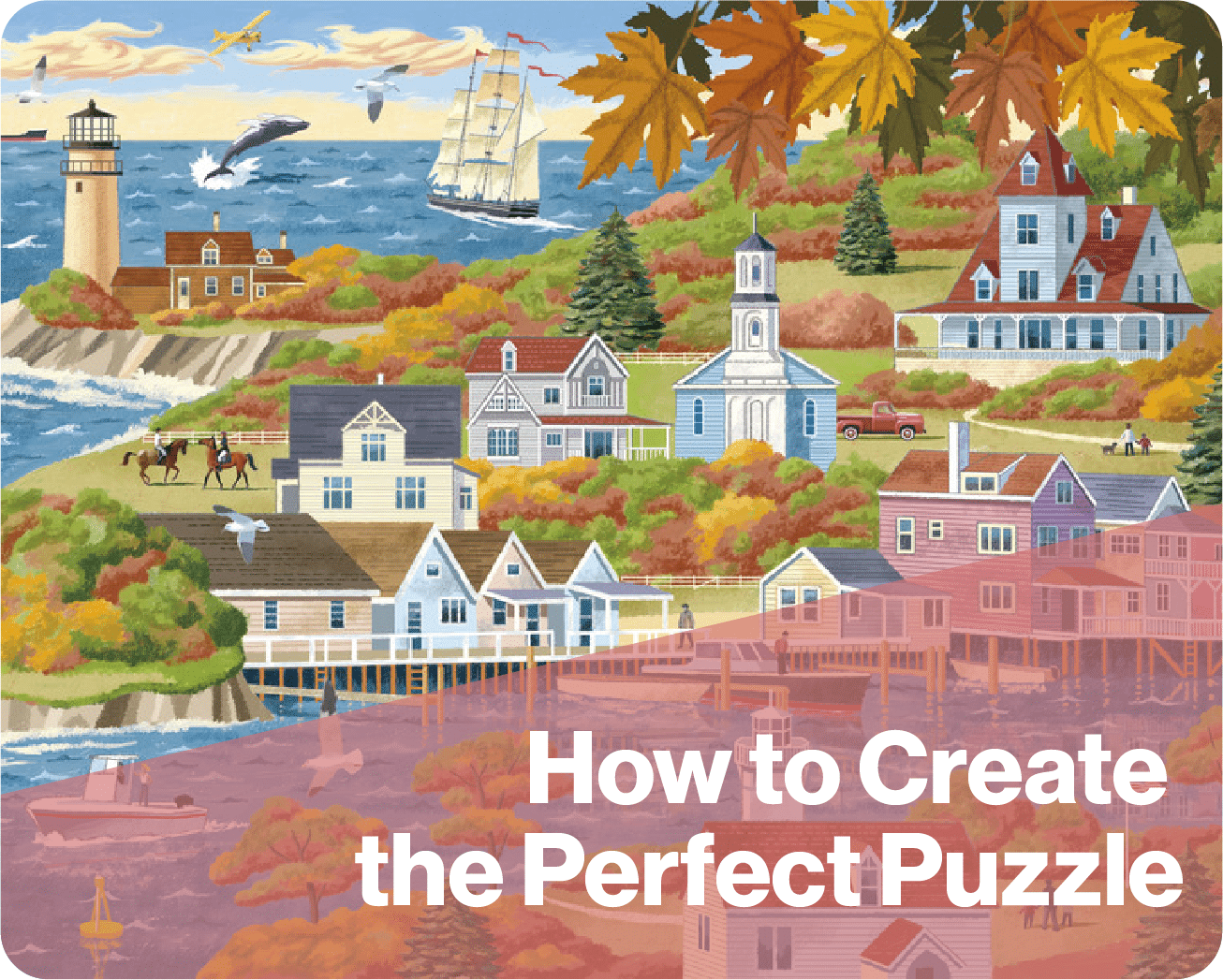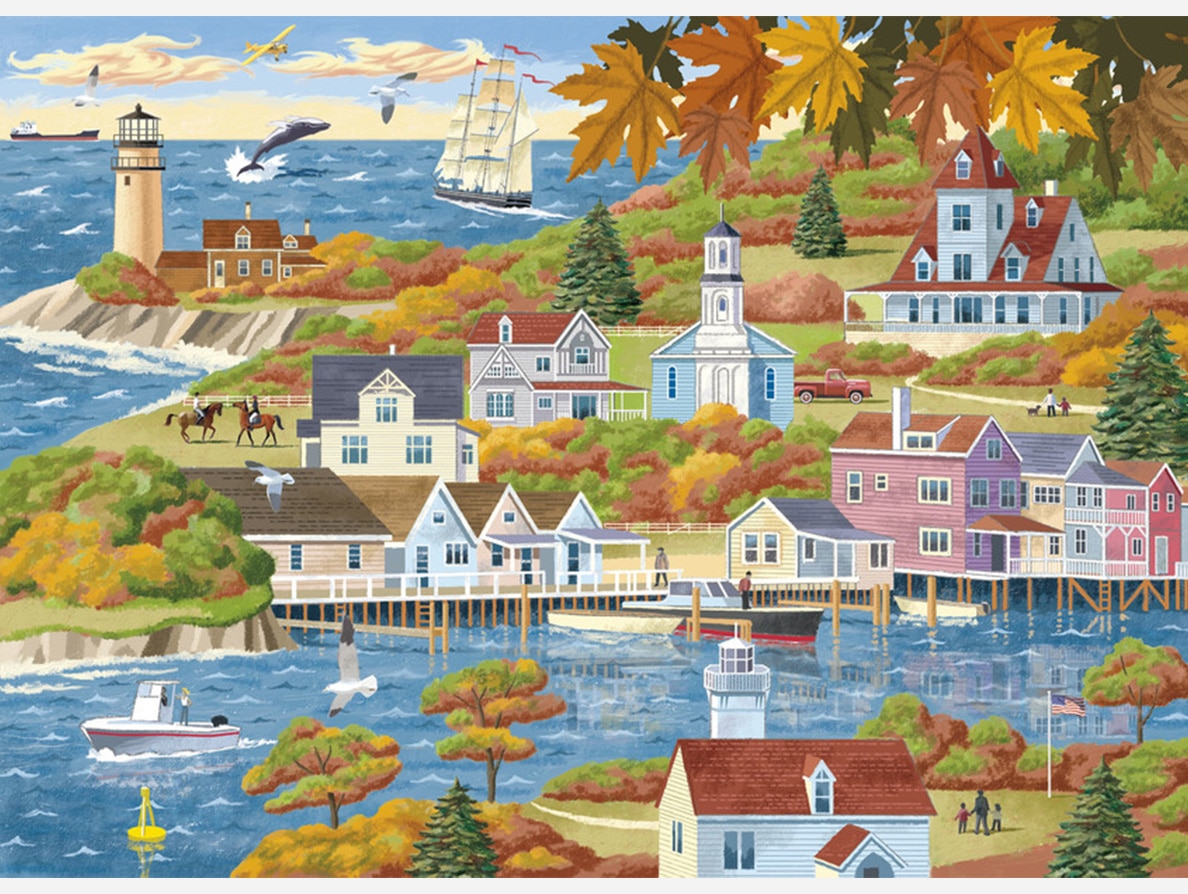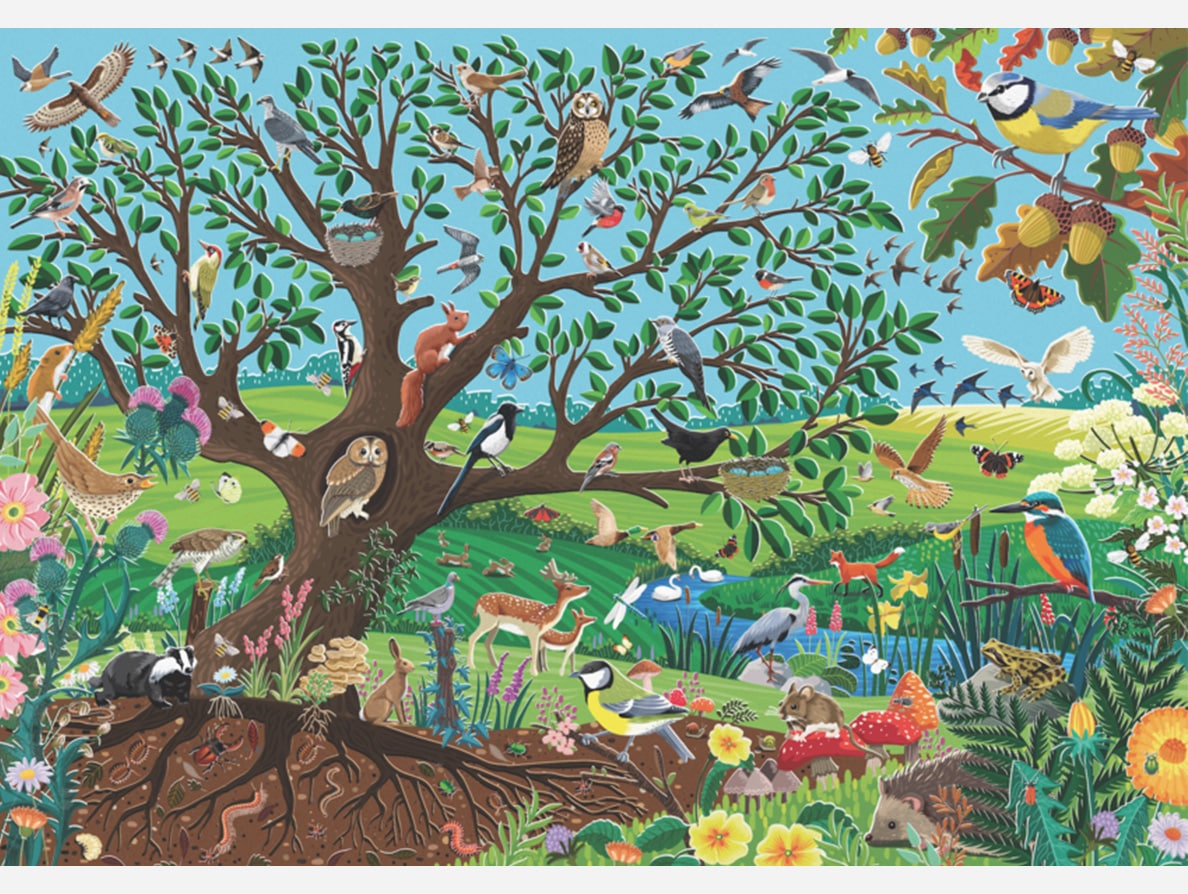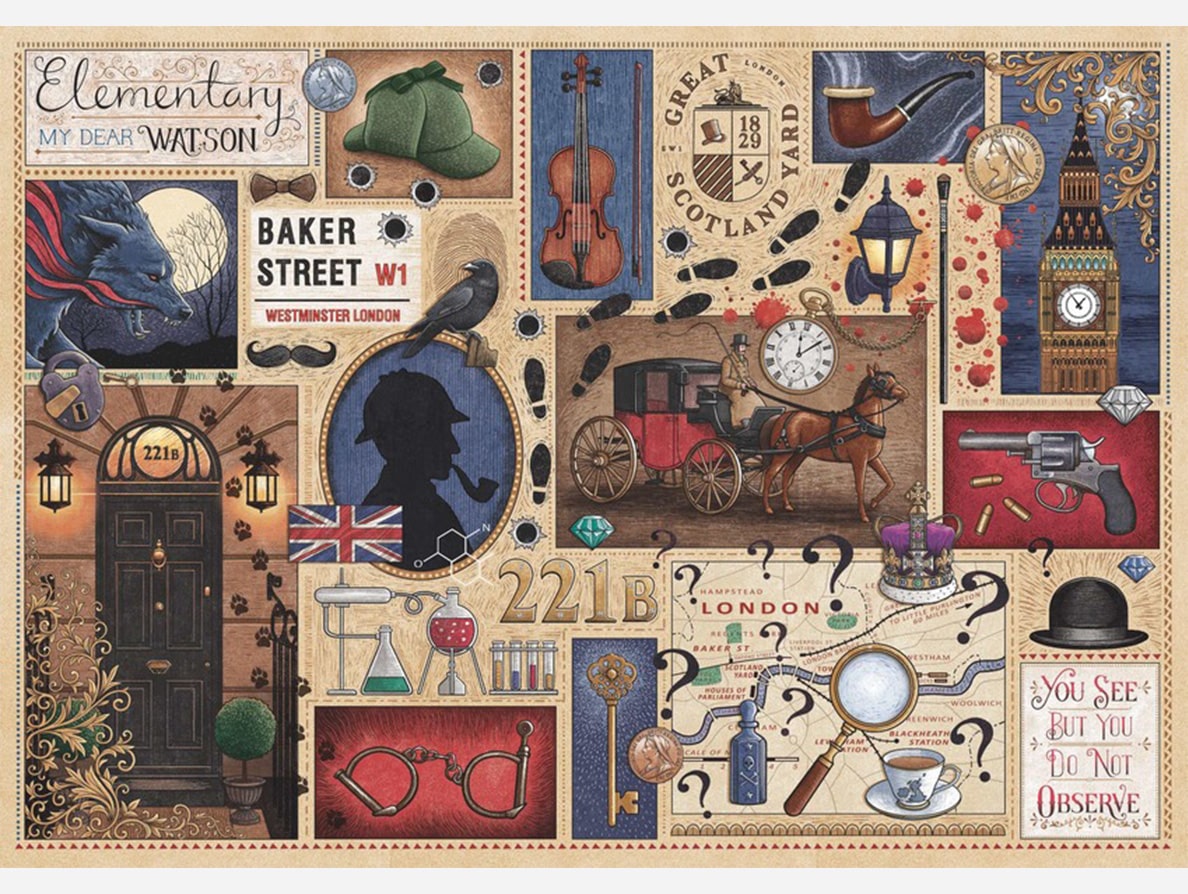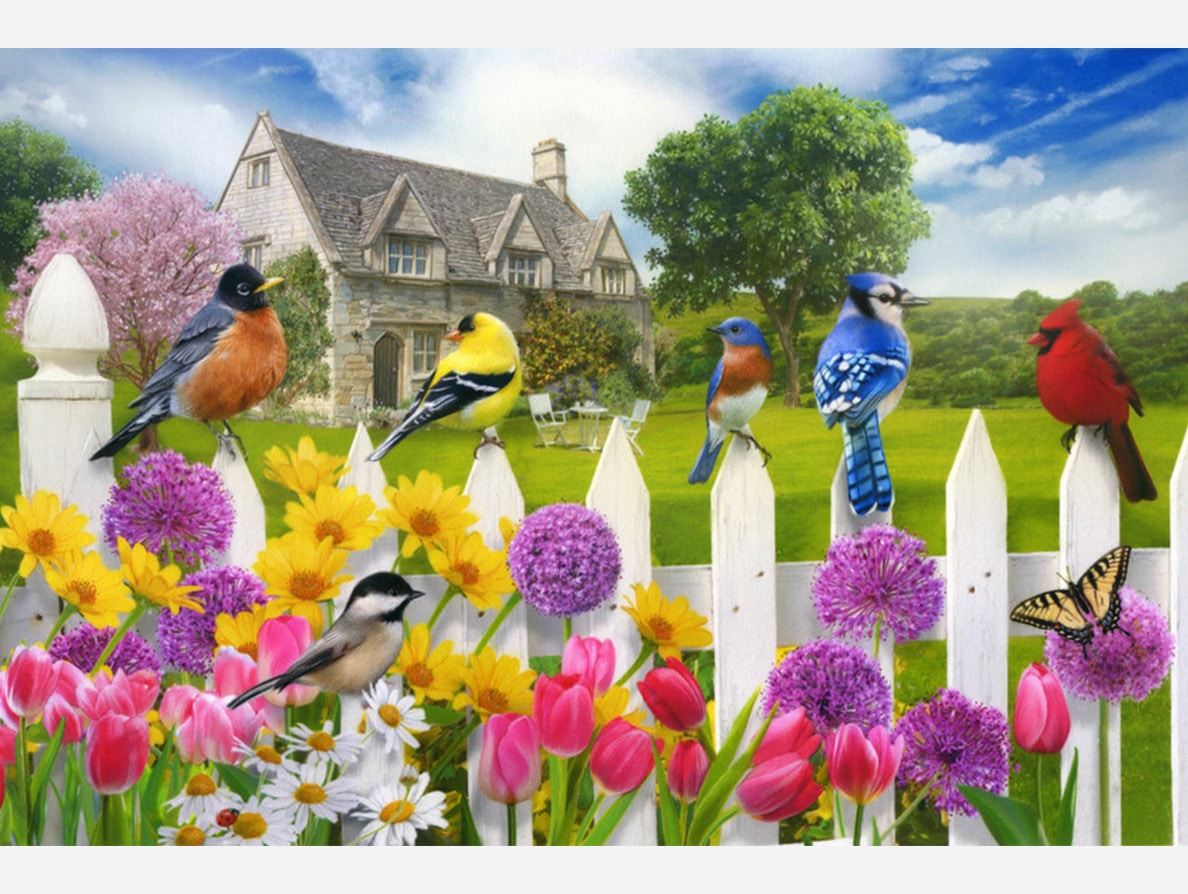How to Create the Perfect Puzzle for the Adult Market
Published on 06/05/2024Illustrations by Advocate Art illustrators Victor McLindon, Jo Parry, James Newman Gray, and Lisa Alderson
How to Create the Perfect Puzzle
Teacher: Amanda Hendon, Global Manager at Advocate Art
I often think of jigsaw puzzles as something that will never go out of fashion – tried and true, they’re a reliable form of entertainment for all ages! With so much of our lives now relegated to screens, it’s nice to be able to work on solving something tactile like a puzzle. Moreover, they’re a great way to bond across generations, after all, who doesn’t have fond memories of doing a puzzle with their grandmother?
However, before we solve a puzzle, it’s got to be created! You might be wondering, how does one illustrate a puzzle, and what does it take to make a puzzle that sells?
One of the first things to consider is the theme of the puzzle, or what it will depict, which is perhaps the most important factor. When deciding on a theme for an adult puzzle, it’s important to consider your target audience. Historically, the largest consumers of jigsaw puzzles for adults have been more elderly folks, so therefore, one of the biggest puzzle themes is nostalgia. Nostalgia scenes often depict snapshots of yesteryear, such as: visiting a malt shop, vintage planes and cars, scenes depicting life in small towns and the countryside, and many more.
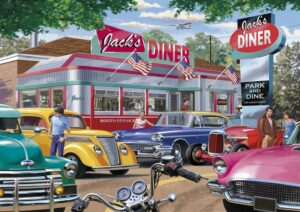
Illustration by Advocate Art illustrator Victor McLindon.
Other popular themes include animals (wild animals, big cats, etc.), scenery, cityscapes, pets, winter and Christmas scenes, as well as fantasy scenes (particularly unicorns). There’s also been a rise in trendier puzzles depicting quirky and humorous content, so it’s important to see what companies are producing in order to keep up with current trends.
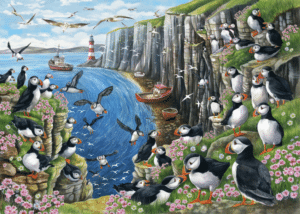
Illustration by Advocate Art illustrator Fiona Osbaldstone.
Once you’ve decided on a theme and have an idea of what to depict, it’s important to keep in mind what makes a puzzle a puzzle; it’s not just a scene like you’d find in a picture book. Adult puzzles tend to be in a hyper realistic style, and it’s integral to include many points of interest in your scene; clients usually like highly detailed pieces. If a puzzle doesn’t have many points of interest, they’re not the easiest to put together, and less likely to sell. Brighter, clearer colors are always a plus, as well as having a large range of colors (avoid muddy colors) and avoid having too many spaces full of just one color. Always consider the customer who will put it together – if there’s 100 pieces of just light blue sky it’d be almost impossible to know which piece goes where!
And that’s just about everything there is to know about puzzles! It’s an incredibly lucrative market, with most clients paying upfront fees alongside royalties. Successful puzzles can be in stock for many years, so it’s a great way to generate passive income. Many times puzzles are commissioned, but in order to get that first order, it’s imperative that you already have a few puzzles in your portfolio so clients can see that you’ve got the knack for making them. With all this in mind, I hope you can feel confident in exploring the puzzle market – so get out there, get creative, and most importantly, have fun!!
For more free tips for how to improve your illustration portfolio, subscribe to our ITSme Learning Newsletter!
Other News
How to illustrate kids’ puzzles: from simple to complex!
How to illustrate kids’ puzzles: from simple to complex! Teacher: Bhavi Patel, Advocate Art Agent/ ITSme Learning Almost every theme and subject matter can be adapted to both kid and adult age groups; the key element that differentiates the two is the level of difficulty. This is determined by how much detail is in the...
New Signed Artist: Carolina Coroa
Carolina was born in Belém, north of Brazil, a city well-known for its exuberating nature and strong native culture. She graduated two times, in Communication and in Fashion. After finishing her master at Istituto Europeo di Design in São Paulo, she worked for 6 years creating prints and patterns for fashion companies, running her own design studio and studying...
Calling out to all Creatives!
Are you looking for an Internship? A great opportunity to learn at one of the top illustration agencies in the world. Make sure you send us an email at: hello@itsme.biz
New Signed Artist: Katie Crumpton
I was born in South Carolina in 1992 but now I’m currently living in the Bay Area. I moved to California to attend the Academy of Art University and graduated with a bachelor’s degree in illustration in 2016. I started drawing from a very young age and was too stubborn to stop. I get inspired...
New Signed Artist: Hana Augustine
I am a 27 yo self taught artist from Indonesia. Since my early childhood I have always had pen and papers with me, I would observe and draw. Drawing has become a medium that speaks to my heart. I grew up with lots of children’s books and fairy tales, I was captivated by their worlds...
New Signed Artist: Daniela Tordi
Daniela Tordi is born in Orvieto, a medioeval town in central Italy. Her childhood memories deal with the frescos of a giant cathedral, real tales from the past. She started illustrating as a self-taught in her thirties, asking to writers for adults to write a children’s story as a special gift. This collaboration, among other...




